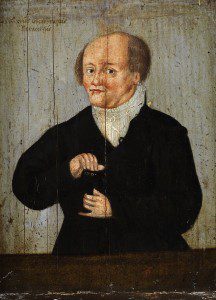Most of us who think about the history of American evangelicalism are Anglo-centric. That is, if we think about the roots of American evangelicalism or about its subsequent development, we think about England (and perhaps Scotland and Wales) if we think outside of North America at all.
Douglas Shantz, in An Introduction to German Pietism: Protestant Renewal at the Dawn of Modern Europe, reminds us that such a tack impoverishes our understanding of American religion. “German Pietism,” he states, “represents a key, but forgotten strand of the religious DNA of North American Christianity.” Around 100,000 German immigrants came to America in the eighteenth century (Shantz suggests this is the single largest source of European emigration to America in that century), and many of them were influential. Moreover, in ways opaque to most observers, Pietism left marks on American Christianity still “evident among the born-again Evangelicals who dominate the continent[‘s religion] today.”
The influence of Pietism on evangelicalism has hardly been ignored by all historians. See, for example, W.R. Ward’s magnificent Early Evangelicalism, an intellectual genealogy of evangelicalism that includes some of the same figures in Shantz’s book. [See this helpful summary of Ward’s book here]. However, Shantz’s book is simultaneously more narrow and more broad. Narrow, in that it focuses specifically on German pietism. Broader, in that it moves far beyond intellectual history to include a fuller social history of pietism. “Under the impact of Pietist reforms,” Shantz writes, “children were educated differently, sermons were preached differently, hymns were sung differently, and community was structured differently.” Shantz takes full advantage of the explosion of scholarship, especially in German, on Pietism over the past several decades (symbolized by the four-volume Geschichte des Pietismus). One could hardly underestimate Shantz’s task. Many of the subjects of his book left behind massive collections of writings and letters, some still awaiting publication.
Of course, Pietism should be studied for its own sake rather than as one stream of several that flow into American evangelicalism, and Shantz only makes that connection at the outset to convince skeptical American readers. Indeed, I always forget how fascinating and influential the characters in Shantz’s book are: Spener and Zinzendorf, but also women such as Maria Juliana Baur von Eyseneck and Johanna Eleonora Petersen (who published fifteen books in her own name in the late-sixteenth and early-seventeenth centuries). Not to mention Gerhard Tersteegen, an ascetic who signed a covenant with Jesus in his own blood. [He wasn’t the only contemporary mystic to do so]. Indeed, just in Shantz’s opening chapter (on the prehistory of Pietism, the impulses that brought it forth), one meets characters such as Paracelsus and Johann Arndt. Paracelsus was a physician, philosopher, theologian, and alchemist who traveled to everywhere from Egypt and Ethiopia to Rurria to England. Like Luther, he was staunchly Aristotelian. Like Luther, he was unafraid to challenge orthodoxies with biting satire. Paracelsus remained within the Roman Catholic Church, but his anticlerical focus on inward devotion to and imitation of Christ influenced future Lutheran reformers. While Paracelsus’s writings inspired later generations of reformers, they eventually disavowed his hermetic interests.

possibly by Augustin Hirschvogel, ca. 1540
Note that Paracelsus’s sword is labeled with the word “azoth,” the “universal cure” Paracelsus claimed to have discovered.
What is Pietism? [And how does one pronounce it? Think a “pie” one might wish to eat]. “In short,” Shantz begins, “Pietism sought to bring reformation to the Reformation,” to replace scholasticism and rigid orthodoxies and ecclesial structures with heartfelt piety. It is worth quoting at some length from Shantz’s own longer definition:
The Pietism movement introduced a new paradigm to traditional German Protestantism, one that encouraged personal renewal and new birth, conventicle gatherings for Bible study and mutual encouragement, social activism and postmillennialism, and ecumenical cooperation — in contrast to the polemical Protestantism that gave rise to the Thirty Years War. Pietism included an eclectic mix of esoteric spirituality, radical Reformation traditions, and biblical devotion, with no clear line separating church Pietists, such as Spener, from the Radicals. The cultural legacy of Pietism includes reforms in caring for the poor and the orphan, new Bible translations, new social networks, experiential literature such as the autobiography and memoir, and worldwide mission.
Pietism influenced other renewal movements, such as Wesleyanism in England. It also unleashed a wave of missionary activity, such as the Moravian missions to the New World.
The above is a foretaste of things to come. Next week, I’ll be back with a fuller review of the book’s contents.












